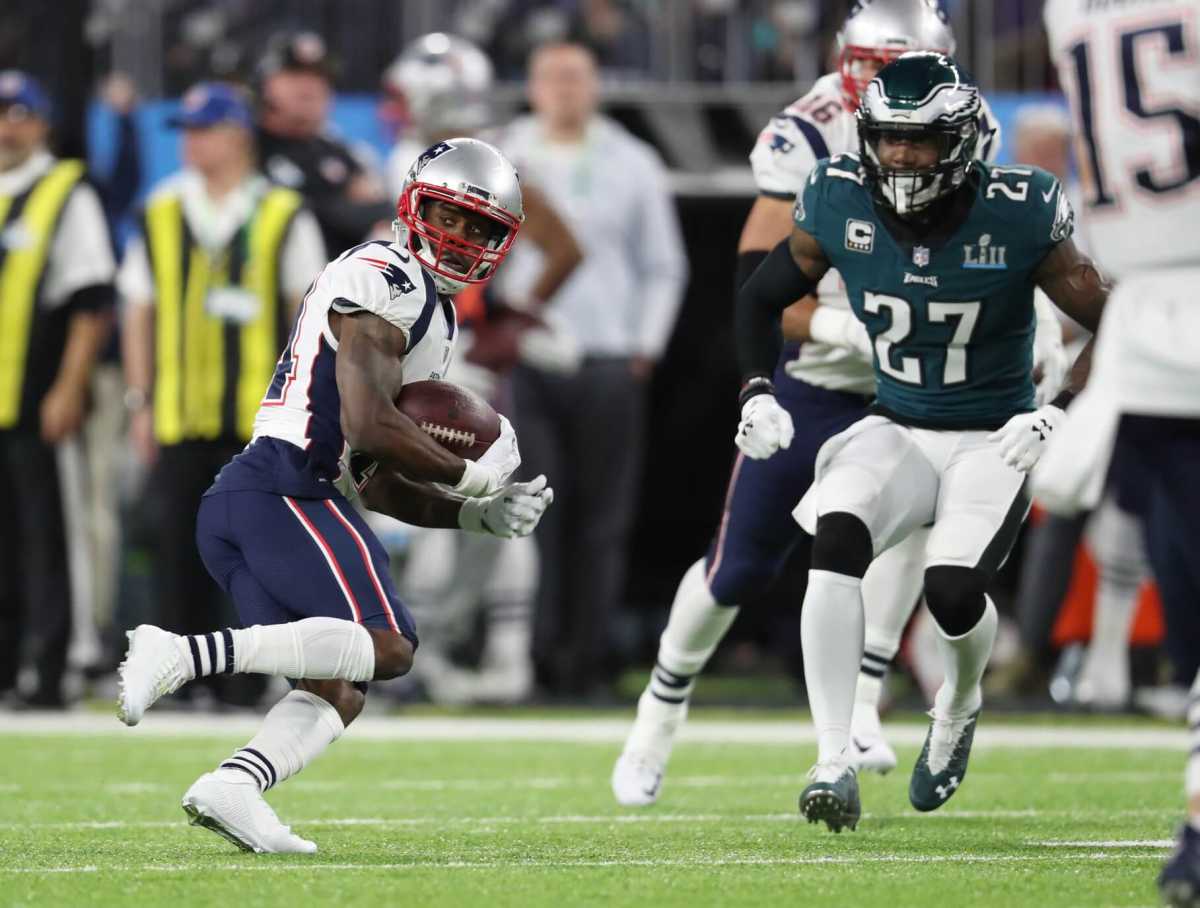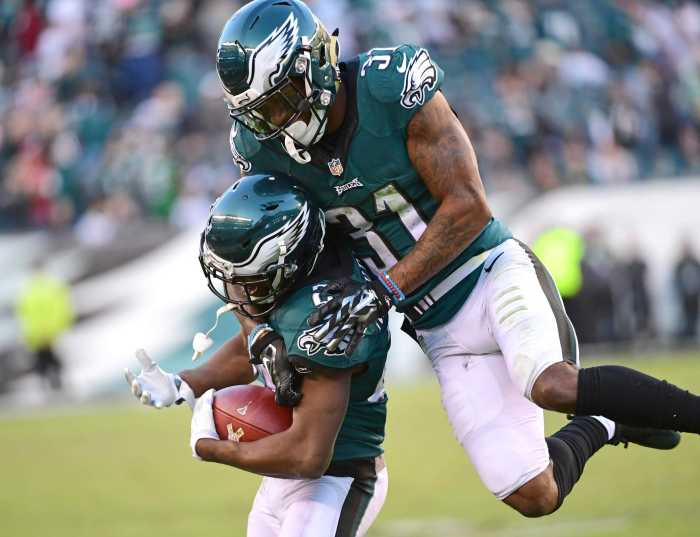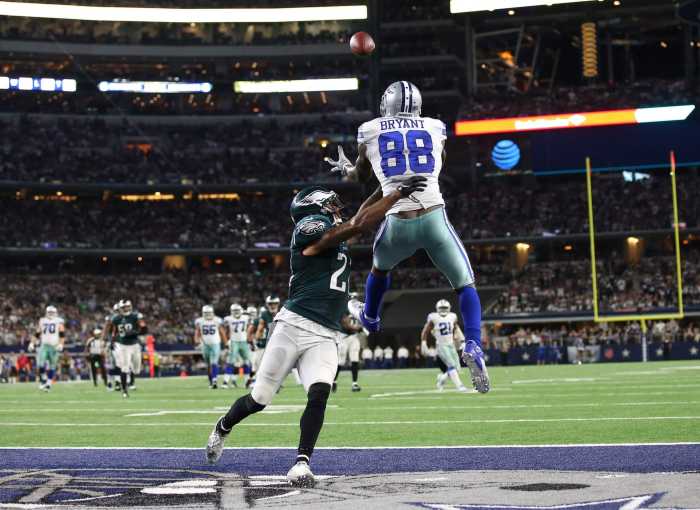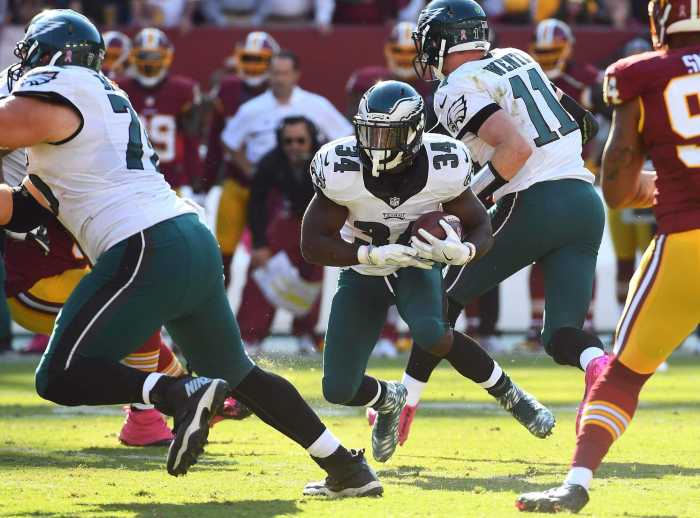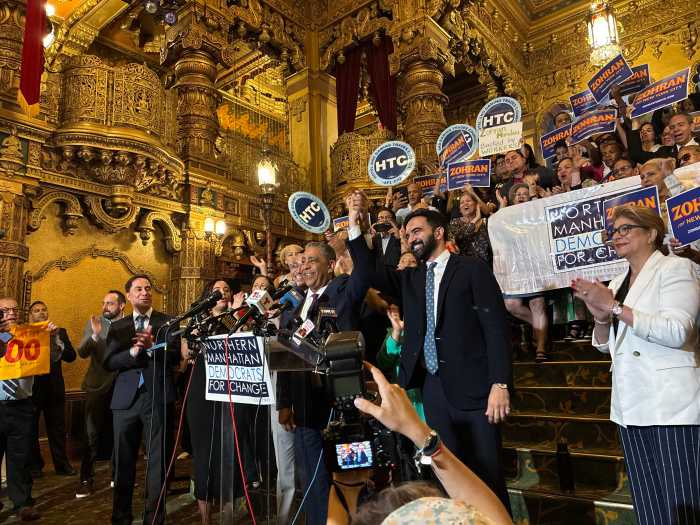If the last few seasons in the NFL has taught us anything, it’s that hybrid defenders have started to find their place in the league. Teams have widely abandoned the traditional ‘strong safety, free safety’ mold, and have instead began asking their safeties to do a variety of things.
The Eagles are no different in this regard. In 2017, they had five players take snaps as a safety:
- Malcom Jenkins
- Rodney McLeod
- Corey Graham
- Alshon Jeffery (Two snaps)
- Chris Maragos (70 snaps)
The focus of this article will be breaking down how often the Eagles utilized their three main safeties in 2017 (Jenkins, McLeod, Graham) in the following roles:
- Free Safety Usage
- Strong Safety Usage
- Usage in the Slot
- Usage in the Box
Free Safety Usage
- Malcom Jenkins – 19.2%
- Rodney McLeod – 80.3%
- Corey Graham – 48.0%
In 2017, the Eagles’ safeties played a combined 2,158 defensive snaps. Most of these snaps (48%) came, not surprisingly, at the free safety position. All teams in the NFL today utilize free safeties, and utilize them often. These defenders cover the field like no other player can – they possess massive responsibilities, both literally and figuratively; not only are they covering massive areas on the field (especially in Cover 1 and Cover 3 concepts), but also because in most instances, they are the last line of defense on any given play.
Out of these three players, the Eagles most prominent free safety in 2017 was Rodney McLeod. McLeod spent 80% of his time on the field playing deep – nothing too surprising for those who have watched him play the last couple of seasons.
Second on the team in free safety usage, Corey Graham lined up deep on 48% of his defensive snaps. Having the veteran third safety on the team allowed Defensive Coordinator, Jim Schwartz, countless possibilities as far as matchups are concerned.
Finally, the most versatile safety on the team, Malcom Jenkins, rounded out the Birds’ free safety usage with a clip of 19.2% of his snaps coming from deep.
Strong Safety Usage
- Malcom Jenkins – 5.0%
- Rodney McLeod – 4.1%
- Corey Graham – 4.9%
Traditional strong safeties in today’s game are an endangered species. In a league where offenses are more spread out than they ever have been, defenses are forced to play ‘matchup ball’. Safeties, more times than not, other than true free safeties, of course, are now tasked with either lining up in the box as an extra run defender, or committing to guarding a tight end or receiver in the slot.
These extra responsibilities have nearly made the traditional strong safety position extinct in today’s game. In fact, the Eagles utilized a strong safety on just five percent (5%) of their snaps last season – the second lowest mark in the NFL.
Safety Usage in the Slot
- Malcom Jenkins – 29.6%
- Rodney McLeod – 8.1%
- Corey Graham – 16.3%
Philadelphia had one of the best true slot corners in the league last season in Patrick Robinson. However, the Eagles wouldn’t have been able to enjoy the success they did last season without more help inside.
While McLeod spent most of his time deep, Jenkins was lined up all over the field, and 30% of the time, he was lined up in the slot. Likewise, Corey Graham spent 16% of his 367 defensive snaps in the slot. As a team, the Eagles ranked 4th in the NFL in safety usage from the slot at a combined clip of 18%.
With every team in the NFL utilizing nickel packages the majority of the time, the rise of the hybrid safety has become widespread. Some teams choose to specialize a corner or two (Patrick Robinson) in the slot, while other teams cross train multiple players to play inside on any given play. The teams who choose to employ extra cornerbacks on the field inherently open up a new problem – opposing offenses can now punish them via the running game or by throwing to tight ends. The counter for this, for many teams, has been to find versatile safeties (many times with a history at cornerback) that thrive in coverage and out in open space.
In any case, safeties with a versatile skillset in today’s game get on the field – period. Think about it – safeties are asked to line up deep and cover massive chunks of the field; they are asked to line up in the box as a linebacker to help against the run; and maybe most importantly of all, they are asked to be able to move down to the slot to cover quick-twitch slot receivers, 6’5”, 250 lb. tight ends, running backs, etc. A safety’s ability to play in the slot opens up a myriad of possibilities for defensive coordinators.
Whether it’s a matter of talent or philosophy, utilizing safeties in the slot is becoming somewhat unavoidable, as offenses continue to exploit the entire width of the field.
Safety Usage in the Box
- Malcom Jenkins – 42.3%
- Rodney McLeod – 7.2%
- Corey Graham – 28.9%
While many teams like to utilize coverage safeties in the slot to act as another cornerback, similarly, many teams employ oversized safeties who thrive in the box as an extra linebacker. These hybrid defenders are not only advantageous to teams from a positional-market standpoint, but also because they provide the capability to satisfy a team’s desperation to be competent against both the run and the pass.
As a team, the Birds’ safeties spent 26% of their snaps in box. Malcom Jenkins, on the other hand, individually, spent the majority of his snaps, a whopping 42%, playing in the box.
Jenkins gets plenty of credit for his ability to line up all over the field, and deservedly so – without his services, the Eagles probably aren’t even in the Super Bowl – let alone winning it. In the Eagles’ backend, they boast a true free safety in Rodney McLeod, a do-it-all stud in Malcom Jenkins, and a reliable-veteran backup in Corey Graham.
Looking ahead at the Eagles safety position for 2018, it will be interesting to see how the Eagles utilize youngsters, Tre Sullivan and Jeremey Reaves, in training camp and during preseason games. If they impress enough, it’s not out of the question that one of them supplant Maragos/Graham for the fourth safety spot.
The concept of using safeties in multiple roles isn’t unique to the Eagles by any means – it’s simply the nature of today’s NFL. The flexibility of Malcom Jenkins and other hybrid safeties around the league has assisted in illustrating a common theme to earning playing time: versatility is the name of the game.
Source: Pro Football Focus
Mandatory Credit: Matthew Emmons-USA TODAY Sports

